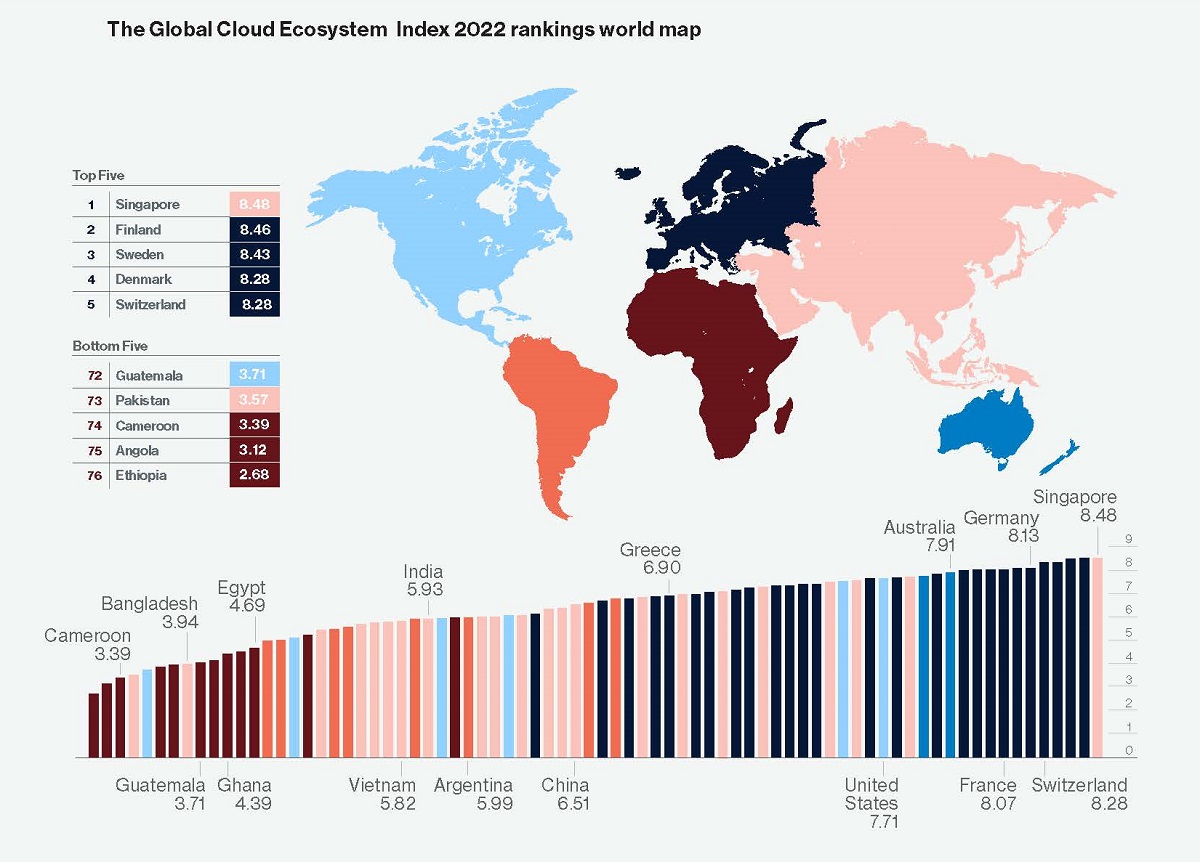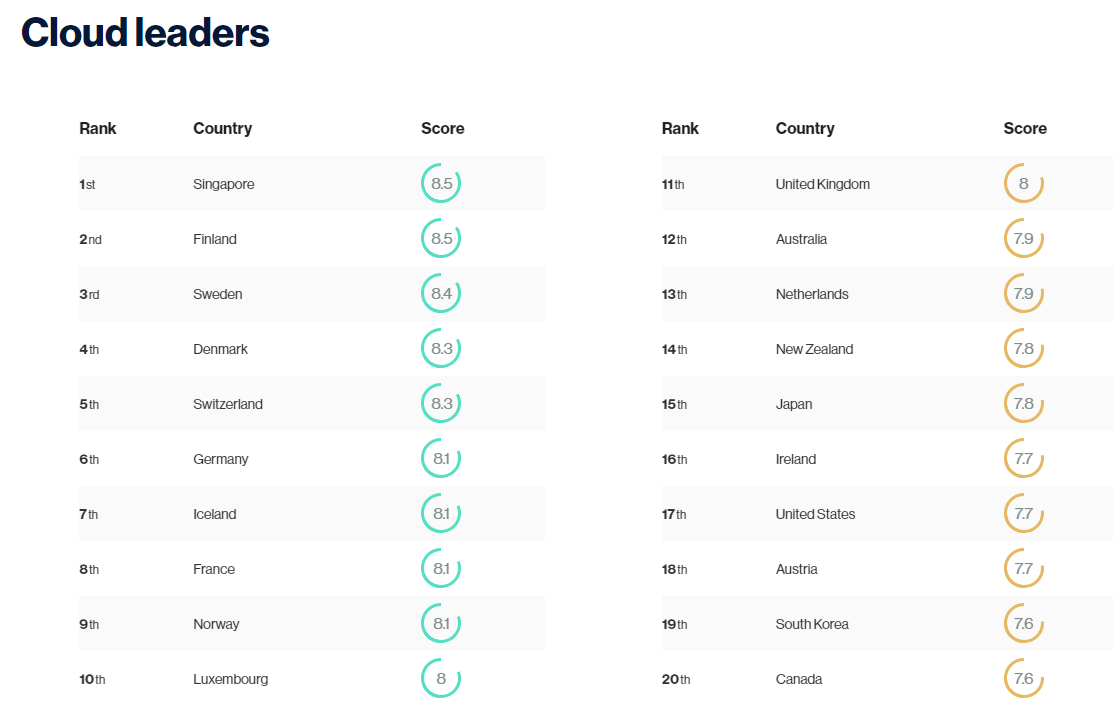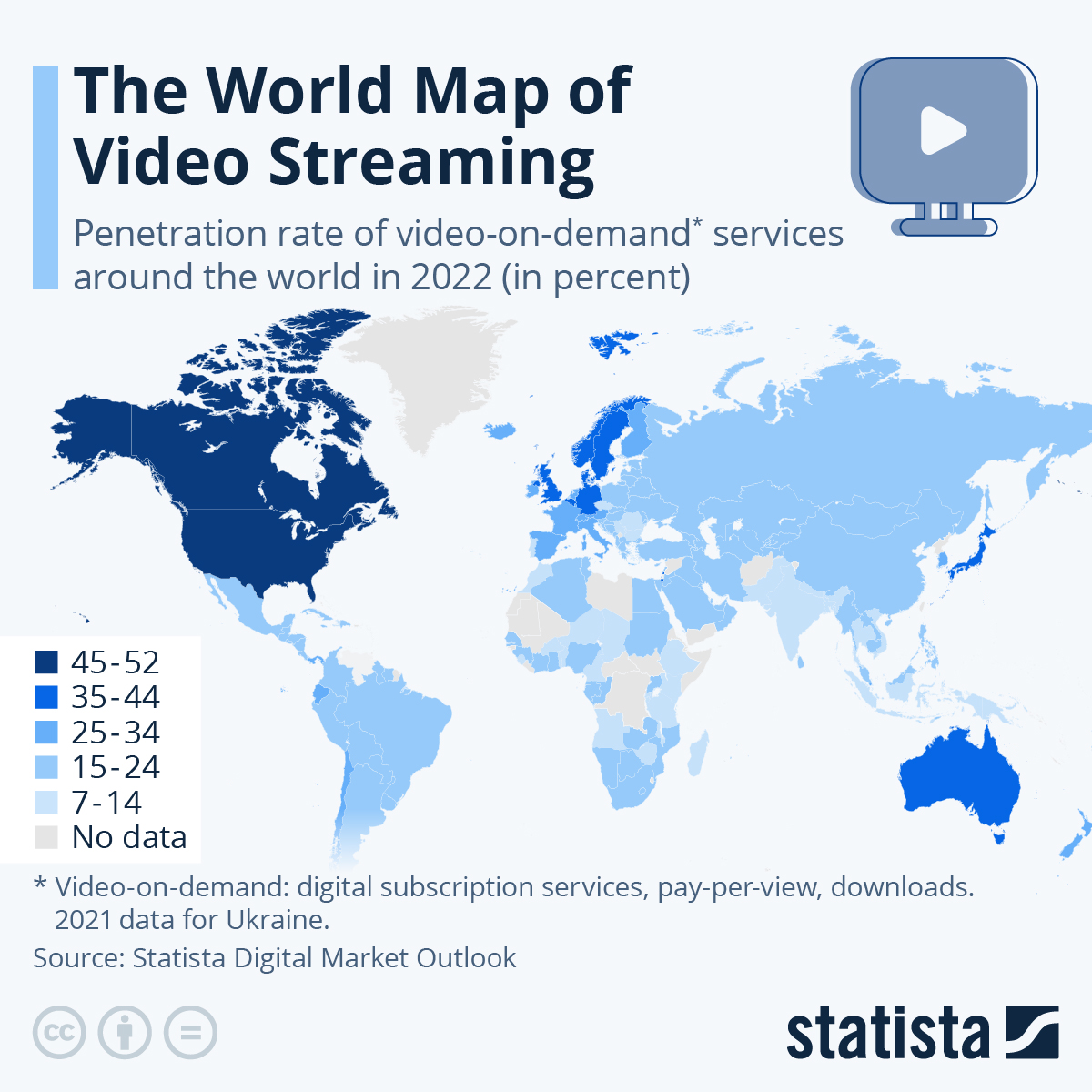
READ MORE: Global Cloud Ecosystem Index 2022 (MIT Technology Review)
Singapore leads and multiple countries in Europe dominate the top 10 of the world’s leading nations when it comes to cloud computing, according to MIT Technology Review. The UK is ranked 11th, Japan 15th, and the US is 17th.
The Global Cloud Ecosystem Index 2022 is a snapshot of global cloud development and innovation, ranking 76 nations and territories on the technology, regulations, and talent they use to promote cloud computing services.
This is not a broadcast or even ICT-centric look at cloud, but a macro measurement of nationwide adoption and maturity across elements that the MIT deems are necessary for businesses and society to advance.

These four measurement planks are based on an assessment of infrastructure, ecosystem adoption, security and assurance, “and talent and human affinity” or skills which drive cloud and the economy.
“The Index charts the path that cloud computing takes to help make economies more diversified and resilient, powering applications such as sustainable transportation and AI-enhanced scientific research and development, while also helping to future-proof skills and jobs,” explains Ravi Kumar, President of Infosys Cobalt, sponsor of the report.
OUR HEADS ARE IN THE CLOUD:
The cloud is foundational to the future of M&E, so it’s crucial to understand how to leverage it for all kinds of applications. Whether you’re a creative working in production or a systems engineer designing a content library, cloud solutions will change your work life. Check out these cloud-focused insights hand-picked from the NAB Amplify archives:
- Get Onto My Cloud: Why Remote Production Tools Are Used by 90% of Video Professionals
- TV Production in the Cloud: The Whys and Hows
- SaaS, IaaS, PaaS: Cloud Computing Class Is in Session
- Take a Tour of the Global Cloud Ecosystem
- Choosing Between Cloud-Native and Hybrid Storage (Spoiler: You May Not Need To)
A decade or so ago, cloud computing was a burgeoning phenomenon, driving cost savings, flexibility, and innovation. Today, cloud is computing — a foundational resource for businesses and governments alike as they strive to harness emerging technologies such as 5G, artificial intelligence, and the internet of things.
“Connectivity is fundamental to prosperity, and the cloud is levelling the playing field for companies — particularly those that are small and those that are headquartered in developing countries. By providing the same suite of technologies and services, regardless of size and location, and doing so at reasonable price points, the cloud breaks down barriers to growth and helps stimulate those employment opportunities that can boost living standards.”
— Ravi Kumar, Infosys Cobalt
Singapore leads the Index overall, thanks to a relentless “cloud-first” strategy that has benefited from a central government commitment and an ability to cultivate collaboration and cooperation across a nationwide digital transformation project. As of January 2022, Singapore had an estimated 600 government systems in the cloud.
Australia and New Zealand rank second and third among East Asia & Pacific nations; both digitally-centric economies have seen cloud adoption rise among the fastest in the world, according to the report.
After Singapore, the rest of the Index’s top 10 places are European countries that seek to preserve the rights of digital consumers (largely via the European Union’s General Data Protection Regulation, GDPR) and to curb monopolistic tendencies of the internet services sector.
Finland, for example, has parlayed a largely mobile data innovation technology cluster into a leading position in edge computing.
“Europe’s cloud leaders have created a digital society that builds trust in its institutions, and in many cases, parlays that into competitive advantage: tiny Luxembourg (10th place) has layered data center hosting and cybersecurity services onto its traditional role as a finance and business services hub,” the report outlines.

Giusella Finocchiaro, a professor of internet law at the University of Bologna, Italy, and chairperson of the Electronic Commerce working group at the UN Commission on International Trade Law, believes that GDPR’s chief merit is that it “drives attention to the value of personal data, and this could create a potentially global standard.”
The top-ranked countries in the infrastructure pillar rely on “copious and reliable broadband and a reasonable density of secure servers and data centers to underpin overall cloud computing capabilities.”
MIT notes that 5G network investments are increasingly seen as a key cloud enabler, “bringing computing resources, and the applications they enable, closer to consumers and businesses, and with greater speed and fidelity.”
WAIT, WE’RE ALREADY TALKING ABOUT 6G? WHAT ABOUT 5G?
6G may already be on the horizon, but there’s still a lot to understand about the benefits — and limitations — of 5G, which is rolling out across the US but has yet to reach peak saturation. Dive into these selections from the NAB Amplify archives to learn what, exactly, 5G is, how it differs from 4G, and — most importantly — how 5G will bolster the Media & Entertainment industry on the road ahead:
- Why 5G is the Cool Thing That Still Hasn’t Happened
- Without a Killer App, We’re Still Waiting on 5G
- Why Is 5G Advanced So Important to 5G Adoption?
- 5G Technology Goes Way Beyond Better Cellphone Service
- 6G Mobile Networks Begin to Take Shape… With 7G Already in the Wings
The report also charted what it dubs the “ecocycle” — namely the increased use of scalable and distributed computing resources, which in turn serves as a catalyst for developing greater and more efficient cloud resources. This then further accelerates digital transformation across economies.
This has two profound implications for the future of the cloud, MIT explains: greater coordination of computing resources will drastically reduce “digital waste” (inefficient legacy infrastructure and unstructured data), and open architectures based on application programming interfaces, or APIs, will allow organizations to share insights and computing resources more efficiently and reciprocally.
“Connectivity is fundamental to prosperity, and the cloud is levelling the playing field for companies — particularly those that are small and those that are headquartered in developing countries,” argues Kumar. “By providing the same suite of technologies and services, regardless of size and location, and doing so at reasonable price points, the cloud breaks down barriers to growth and helps stimulate those employment opportunities that can boost living standards.”
The challenge ahead, the report outlines, is for private and public sectors to continue implementing the measures that support not just continued but scaled innovation and help more institutions — and more individuals — to realize the cloud’s full potential.
A Map of Worldwide SVOD Penetration Rates
Facing a rising number of competitors, Netflix has found it difficult to grab more share in the streaming marketplace and recorded its first decline in its subscriber base since the first quarter of 2022. However, worldwide growth of SVOD services rose roughly 20% in 2022, according to market research & analysis consultancy Statistia.
As Statista senor data analyst Katharina Buchholz explains, the map below shows “the most promising markets for chasing video-on-demand users are now South Asia, Latin America and Africa, where Disney+ has arrived in several countries (including South Africa) in 2022. While the market is expanding more slowly in North America, where video-on-demand has reached approximately 50% of the population, there is still some more room to grow in Europe, where this figure varies from 14% in Bulgaria to 42% in the United Kingdom.”


